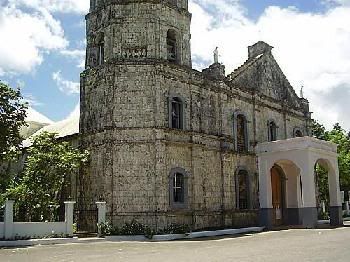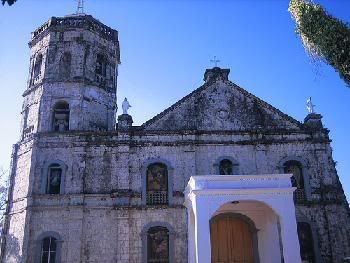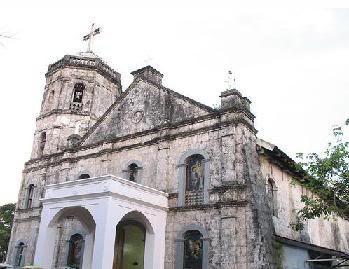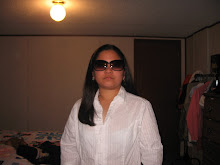
Last August 2007 Baybay was officially became a city in the province of Leyte, Philippines. Covering an area of 46,050 hectares, Baybay City is composed of 92 barangays, 23 of which are in the poblacion. The remaining 69 are rural barangays. Baybay City is classified as a first class city. It is situated on the western coast of the province of Leyte. Consist Of 4 types of climate, which is generally wet. Its topography is generally mountainous in the eastern portion as it slopes down west towards the shore line. Generally an agricultural city, the common means of livelihood are farming and fishing. Some are engaged in hunting and in forestal activities. The most common crops grown are rice, corn, root crops, fruits, and vegetables. Industries operating include the Jollibee Food Chain Corporation, Specialty Products Manufacturing, Inc. and Visayan Oil Mill. Various cottage industries can also be found in the city such as bamboo and rattan craft, ceramics, dress-making, fiber craft, food preservation, mat weaving, metal craft, fine Phillipine furniture manufacturing and other related activities. Baybay has great potential as a tourist destination, especially for tennis players. It is not only rich in biodiversity and history it also houses the campus of the Visayas State University (formerly the Leyte State University/Visayas State College of Agriculture and the Jungle Valley Park. Likewise, it has river systems fit for river cruising, numerous caves for spelunking, forests, beaches, and marine treasures. This richness coupled with the friendly Baybayanos will be an element for a successful tourism program. Considering the role of tourism in development, the Baybay City intends to harness its tourism potential. According to the 2000 census, it has a population of 95,630 people in 19,517 households.
Barangays and Poblacion Of Baybay City: Altavista, Ambacan, Amguhan, Ampihanon, Balao, Banahao, Biasong, Bidlinan, Bitanhuan, Bubon, Buenavista, Bunga, Butigan, Kabatuan, Caridad, Ga-as, Gabas, Gakat, Guadalupe (Utod), Gubang, Hibunawan, Higuloan, Hilapnitan, Hipusngo, Igang, Imelda, Jaena, Kabalasan, Kabungaan, Kagumay, Kambonggan, Candadam, Kan-ipa, Kansungka, Kantagnos, Kilim, Lintaon, Maganhan, Mahayahay, Mailhi, Maitum, Makinhas, Mapgap, Marcos (Kab-kab), Maslug, Matam-is, Maybog, Maypatag, Monterico, Palhi, Pangasungan, Pansagan, Patag, Plaridel, Pomponan, Punta, Sabang, San Agustin, San Isidro, San Juan, Santa Cruz, Santo Rosario, Sapa, Ciabo, Villa Solidaridad, Zacarito, Cogon, Monte Verde, Villa Mag-aso, Visca, Farmer's Village, Gangsa, Poblacion Zone 1, Poblacion Zone 2, Poblacion Zone 3, Poblacion Zone 4, Poblacion Zone 5, Poblacion Zone 6, Poblacion Zone 7, Poblacion Zone 8, Poblacion Zone 9, Poblacion Zone 10, Poblacion Zone 11, Poblacion Zone 12, Poblacion Zone 13, Poblacion Zone 14, Poblacion Zone 15, Poblacion Zone 16, Poblacion Zone 17, Poblacion Zone 18, Poblacion Zone 19, Poblacion Zone 20, Poblacion Zone 21, Poblacion Zone 22, Poblacion Zone 23
POPULATION
Population Based on the 2002 NCSO report, Baybay registered a total population of 99,689 showing an increase of over that of 1990 NSCO report which was established at 82,281. The city has ninety-two (92) barangays. Among the 92 barangays, the poblacion is composed of 23 zones which retained the highest number of 17,391 in population, and 82,289 for the 69 rural barangays. Urban-Rural Population Distribution In the year 1990, the urban population of Baybay was 15,034 or 18.27% while the rural population was 67,247 of 81.73% of the total population. The 2000 NCSO population count revealed a population of 17,391 or 17.44% showing a difference of 2,357, which indicates that there is an increase in population. The rural population registered a total of 82,298 or 82.56% of the total population with an increment of 14,941 from that of the 1990 count.
CULTURE
Experience Baybay’s unique blend of culture reflected in its various traditions and its dialect. As a melting pot in the western part of Leyte, Baybay has developed an interesting mix of culture through the influence Cebuanos, Waray and the Surigaonons. And although most Baybayanos have adopted an urban lifestyle, they have retained their distinctive traits and traditions, which makes Baybay an interesting and pleasant place to visit. The Baybay Tennis Club, located on 30 Deciembre Street next to a public and private school is an outstanding place to visit, with its three coral/clay mix courts and two hard courts, 25 meter six lane Olympic style swimming pool that is five feet deep all around, a spacious verandah beside the courts with great and inexpensive food and drink. As a tennis destination, the club is unparalleled in the entire south of Leyte and could be considered any clay court tennis player's heaven.
BAYBAY PARISH CHURCH

In 1620, Baybay was founded by the Jesuits. A church and mission house were built this year. Oral lore identifies the Jesuits’ Baybay with Barrio Punta or Catarman point, not with the present site of Baybay town. On 3 December 1634, the Jesuit Juan del Campo was killed by Moros in Baybay.
On 4 November 1663, Moros under Sultan Kudarat raided Baybay.

On 27 February 1836, Baybay was raised to parish status, under the advocacy of the Immaculate Conception in accordance with the episcopal decree of 8 September 1835. As of this year the first church in Barrio Punta (Catarman Point) is reported as in need of repairs.

In 1852, the present church in the población of Baybay was built under Fray Vicente E. Coronado and continued under the supervision of Maestro Proceso from Manila. In 1866, Fire destroyed the church except for the chapel of the Holy Cross. In 1870, The church was repaired and finished by painter and sculptor Capitán Mateo Espinoso, probably a local dignitary and artisan.



0 Comments:
Post a Comment